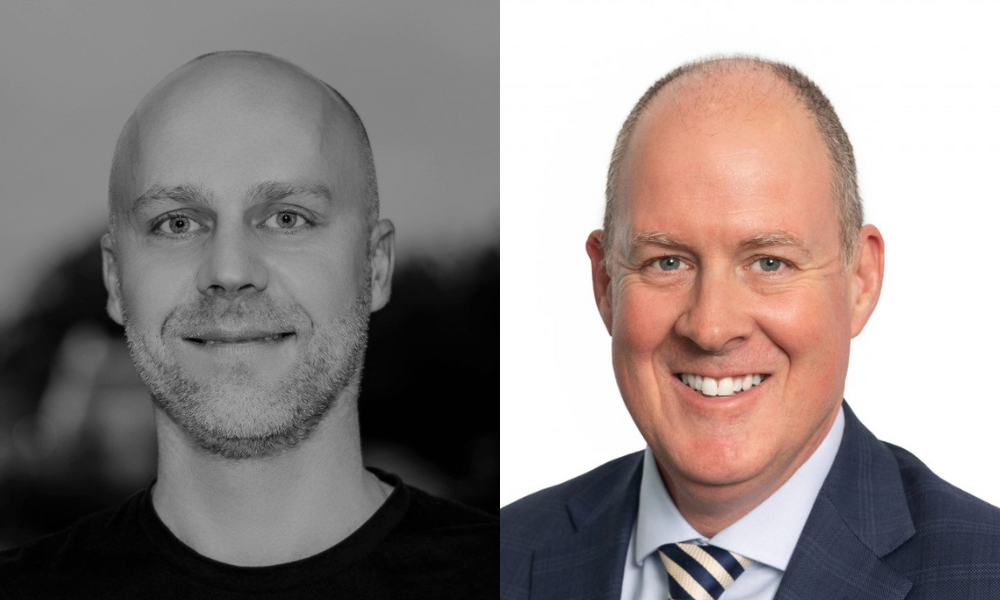Home buyers may now have to spend a mind-blowing 144 years to pay off their mortgages due rapidly rising home prices and surging interest rates, new research has found.
HtAG Analytics, an NSW-based property technology firm, analysed its “years to own” metric – which estimated how long a home buyer could repay their mortgage based on home prices, interest rates, and median family income levels – to show how housing affordability has continued to plunge.
HtAG Analytics findings showed that New South Wales houses, which were the least affordable, would take Australians an average 42 years to own, followed by Victoria with an average of 39 years, then Tasmania at 38 years, News Corp Australia Network reported.
Alex Fedoseev (pictured above left), HtAG Analytics co-founder, identified high home prices, median wage per suburb, surging interest rates, and the socioeconomics of the area as the major factors that impacted the years-to-own metric.
“There can be a situation where prices may not be that high but wages in that locality are below the city average…the affordability metric will actually be higher,” Fedoseev said. “The higher the interest rates, the higher the repayments … the less likely the families in the neighbourhood based on their current wages can afford the repayments.”
Fedoseev said suburbs with years to own above 100 were consistently unaffordable due in part to two features – high house prices and large cohort of renters.
“In these markets, a significant portion of the population is engaged in renting units rather than owning a house,” Fedoseev said.
“While the majority of household incomes in these suburbs may suffice for renting or owning a unit, they may not be adequate for purchasing houses. This leads to a property market that primarily supports rental properties in units and maintains high house prices.”
Based on this metric, the most unaffordable place to own a house in Australia is Strathfield in NSW, where home buyers were expected to take 144 years to pay off an average mortgage.
For units, Soldiers Point in NSW, Noosa Heads in Queensland, and Byron Bay in NSW were the least affordable suburbs, taking 82, 75, and 74 years, respectively, to own.
The gap between owning a house and a unit was relatively smaller in South Australia and Queensland, however, Fedoseev said, indicating they were more balanced property markets.
“In contrast, New South Wales and Victoria exhibit a larger disparity, demonstrating the dominance of higher-priced houses in those markets,” he said.
It was most affordable to own a property in Mount Isa in Queensland, taking just an average 3.5 years to pay off. This was followed by Morowa in Western Australia, Kambalda East in Western Australia, and Dysart in Queensland, taking 4.4, 5.19, and 5.97 years, respectively, to own a unit.
Hayden Groves (pictured above right), president of Real Estate Institute of Australia, said rapid rate hikes had exacerbated housing affordability as well as the average loan size not changing by much.
“This all goes back to, I think fundamentally, a lack of supply problem as to why we’re still seeing house prices increase,” Groves said.
“There’s fewer property transactions and there’s fewer listings in the market… people who already own real estate who are looking to move around the market find it’s very difficult to find the next property that meets their needs. So, they’re staying put and so you’ve got less mobility around the market as well as less on offer.”
Groves was unsure as to when housing affordability conditions would improve as demand increased and supply lagged, especially with constraints in the construction sector keeping projects on hold.
“Developers are not able to commence those developments because of the cost of construction, the cost of labour,” Groves said. “As a result, there’s all this pent-up supply in the market that’s ready to go but until there’s a bit more certainty in the economic market… we’re not going to see meaningful supply come into the market.”
Groves said REIA was calling on the Greens and the Opposition in the federal parliament to pass the Housing Australia Future Fund, News Corp Australia Network reported.
“We do need more supply in the market and we need it now … the less we talk about it and the more we do, the better it’ll be for housing affordability going forward,” he said. “I think affordability will continue to deteriorate before it gets better, and that could be as late as 2025, 2026.”
Use the comment section below to tell us how you felt about this.


